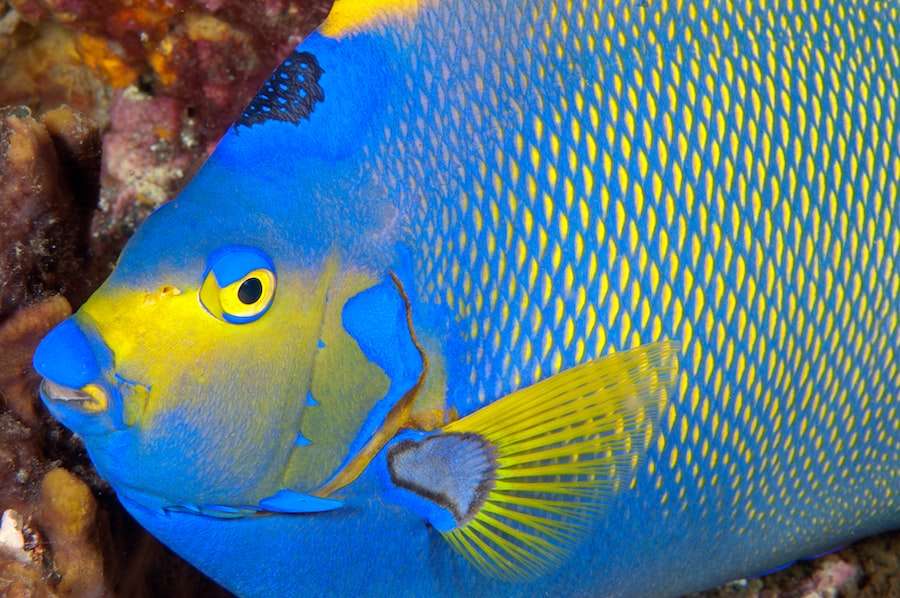Coral: Exploring the Symbolism of this Fascinating Marine Creature

Coral reefs are often referred to as the “rainforests of the sea” due to their incredible biodiversity and importance to marine ecosystems. These underwater structures are made up of tiny organisms called polyps that secrete a hard calcium carbonate skeleton, which forms the basis of the reef. Coral reefs provide habitat for a diverse range of marine species, including fish, crustaceans, and mollusks. They also play a crucial role in protecting coastlines from storms and erosion.
Coral reefs are home to an estimated 25% of all marine species, despite covering less than 1% of the ocean floor. The complex structure of coral reefs provides shelter, food, and breeding grounds for countless organisms. Many fish species rely on coral reefs for their survival, using them as nurseries for their young and as a source of food. Without coral reefs, these species would struggle to survive, leading to a decline in overall marine biodiversity.
In addition to providing habitat for marine life, coral reefs also play a vital role in protecting coastlines from storms and erosion. The intricate structure of coral reefs acts as a natural barrier, absorbing the energy of waves and reducing their impact on the shore. This helps to prevent coastal erosion and protects communities living near the coast from the devastating effects of storms and hurricanes.
The Historical Significance of Coral in Human Culture
Coral has been valued by humans for thousands of years for its beauty and durability. Ancient civilizations such as the Egyptians, Greeks, and Romans used coral to create jewelry and decorative objects. In ancient Rome, coral was believed to have protective properties and was often worn as an amulet or talisman to ward off evil spirits.
In addition to its protective properties, coral was also believed to have healing properties in many ancient cultures. The ancient Greeks believed that coral could cure ailments such as stomachaches and headaches. In ancient China, coral was used in traditional medicine to treat a variety of conditions, including skin disorders and respiratory problems.
The Spiritual Significance of Coral in Different Religions
Coral holds spiritual significance in many religions around the world. In Hinduism, coral is considered sacred and is associated with the goddess Lakshmi, who represents wealth and prosperity. It is believed that wearing coral jewelry can bring good fortune and protect against negative energies.
In Buddhism, coral is also considered sacred and is often used in religious ceremonies and rituals. It is believed to symbolize the Buddha’s teachings and is used as an offering to the gods. In Tibetan Buddhism, coral is often used in the creation of prayer beads, which are used during meditation and chanting.
The Symbolism of Coral in Art and Literature
Coral has long been used as a symbol of beauty, strength, and resilience in art and literature. In ancient Greece, coral was associated with Aphrodite, the goddess of love and beauty. It was often depicted in paintings and sculptures as a symbol of feminine beauty and grace.
In literature, coral has been used as a metaphor for strength and resilience. In Shakespeare’s play “The Tempest,” the character Miranda describes coral as “a branch of hope” that can withstand the harshest conditions. This symbolism has been echoed in countless works of literature throughout history.
The Healing Properties of Coral in Alternative Medicine
Coral is believed to have medicinal properties in some cultures and is used in alternative medicine practices such as traditional Chinese medicine and Ayurvedic medicine. In traditional Chinese medicine, coral is believed to have cooling properties and is used to treat conditions such as inflammation, fever, and skin disorders.
In Ayurvedic medicine, coral is believed to have rejuvenating properties and is used to treat a variety of ailments, including digestive disorders, arthritis, and respiratory problems. It is often ground into a powder and mixed with other herbs to create medicinal preparations.
Coral as a Symbol of Love and Romance

Coral has long been associated with love and romance. In ancient Rome, coral was often given as a gift to symbolize love and commitment. It was believed to have the power to strengthen relationships and bring harmony to couples.
Coral jewelry, in particular, has been a popular choice for romantic gifts throughout history. The vibrant red color of coral is often associated with passion and desire, making it a fitting symbol of love and romance.
The Role of Coral in Sustainable Tourism
Coral reefs are a major attraction for tourists around the world. Snorkeling and diving among coral reefs offer visitors a unique opportunity to explore the underwater world and witness the incredible biodiversity of these ecosystems.
However, the growing popularity of coral reef tourism has also led to increased pressure on these fragile ecosystems. Irresponsible tourism practices such as touching or standing on coral can cause irreparable damage. Additionally, the use of sunscreen containing harmful chemicals can contribute to coral bleaching.
Sustainable tourism practices can help protect coral reefs and ensure their long-term survival. This includes educating tourists about the importance of coral reefs and how to minimize their impact, as well as supporting local conservation efforts.
The Threats Facing Coral Reefs and Their Symbolic Implications
Coral reefs are facing numerous threats, many of which are caused by human activities. Climate change is one of the biggest threats facing coral reefs today. Rising sea temperatures can cause coral bleaching, a phenomenon in which corals expel the symbiotic algae that provide them with food and color. Without these algae, corals become stressed and can die.
Pollution from agricultural runoff, sewage, and industrial waste also poses a significant threat to coral reefs. Nutrient pollution can lead to algal blooms, which smother corals and prevent them from receiving the sunlight they need to survive. Additionally, overfishing can disrupt the delicate balance of coral reef ecosystems, leading to a decline in biodiversity.
The loss of coral reefs has symbolic implications for human society. Coral reefs are not only important for the health of marine ecosystems but also for the livelihoods and well-being of millions of people around the world. The loss of coral reefs would not only result in a decline in marine biodiversity but also have far-reaching social and economic consequences.
Coral as a Metaphor for Resilience and Adaptability
Coral’s ability to adapt to changing conditions is a metaphor for human resilience. Despite facing numerous threats, coral reefs have managed to survive for millions of years. They have evolved to withstand changes in temperature, salinity, and nutrient availability, making them one of the most resilient ecosystems on Earth.
Coral can inspire us to be more adaptable and resilient in the face of challenges. Like coral, we must learn to adapt to changing conditions and find innovative solutions to protect our planet and ensure a sustainable future.
The Enduring Significance of Coral in Human Society
Coral has played an important role in human culture and society for thousands of years. From its historical significance as a symbol of beauty and healing to its spiritual significance in various religions, coral holds a special place in the hearts and minds of people around the world.
As coral reefs face increasing threats from climate change, pollution, and overfishing, it is important to recognize their enduring significance and work to protect them for future generations. By promoting sustainable tourism practices, supporting conservation efforts, and taking action to mitigate climate change, we can ensure that coral reefs continue to thrive and inspire us for years to come.
If you’re interested in exploring the symbolism of coral, you might also enjoy reading about the symbolism of the moon. The moon has long been associated with various meanings and interpretations across different cultures and religions. It represents femininity, intuition, emotions, and the cyclical nature of life. To delve deeper into this fascinating topic, check out this article on the symbolism of the moon at Symbolism Hub.
FAQs
What is coral symbolism?
Coral symbolism refers to the various meanings and interpretations associated with coral in different cultures and traditions.
What does coral symbolize in Christianity?
In Christianity, coral is believed to symbolize the blood of Christ and is often used in rosaries and other religious jewelry.
What does coral symbolize in ancient mythology?
In ancient mythology, coral was often associated with the sea and was believed to have protective powers against evil spirits and storms.
What does coral symbolize in Feng Shui?
In Feng Shui, coral is believed to bring good luck, prosperity, and protection to the home. It is often used in decorative items and jewelry.
What does coral symbolize in Native American culture?
In Native American culture, coral is believed to have healing powers and is often used in traditional medicine. It is also associated with fertility and the ocean.
What are some common colors of coral and their meanings?
Common colors of coral include red, pink, white, and black. Red coral is often associated with passion and energy, while pink coral symbolizes love and harmony. White coral is believed to bring peace and purity, while black coral is associated with protection and grounding.





